As EXO Once Sang: Someone Call the Doctor
Imagine this: You arrive in Korea and everything is going well so far. You are exploring Sinchon (신촌), looking around Yonsei (연세대), and clubbing in Hongdae (홍대). However, one Sunday morning, you wake up with a scratchy throat and everything goes downhill quickly.
That is what happened to me within my first few weeks in Korea. What I originally thought was just a simple cold from the new environment, quickly became a sinus infection that was stopping me from truly enjoying my time in Korea. Classes had started, and I was there with a stuffy nose and constantly sniffling to stop my nose from dripping. If that description sounds disgusting, then just imagine how I felt when I was coughing and sneezing my way through class. In the first week that I was sick, it was simply just that: a stuffy nose and slight coughing. When I noticed that this sickness seemed like it was going to stay, I went to one of the many pharmacies that were around Sinchon. In South Korea, the pharmacies are quite noticeable, such which is those pictured below. What makes them easy to recognize is the fact there normally are red or green crosses that you associate with medical help.
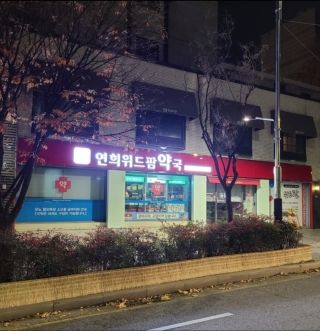
Going into the pharmacy, I used Papago, the better translation app to use in SK, to ask if they had cough medicine. Instead, the pharmacist immediately started asking me about the different symptoms I was dealing with. She pointed to each part that could hurt and used broken English to explain. In the end, I walked away with three different meds for my nose, headache, and throat pain, totaling 14000 won or USD 10.63. The pharmacist had written on the box how much I had taken and for how long, which was very helpful because the regular instructions were all in Korean. I followed the directions and hoped and prayed that it would work. Within the three days that she told me to take them, I felt significantly better. I thought that my cold was gone. I went out that weekend feeling like I was on top of the world.
Waking up on Tuesday morning to my head feeling like it would explode, my congestion back, and my throat on fire felt like I had fallen back to earth, hard.
Throughout the day, my head progressively got worse to the point that I had so much sinus pressure in both of my cheeks that it hurt to even eat. I was hopeful that by taking some Nyquil and some of the meds given to me by the pharmacist, I would get better. But, when I woke up on Wednesday morning, I felt significantly worse. Luckily, that day both of my classes were pre-recorded which meant I did not have a set class time(I will talk more about my classes in a future post). I had decided that this was the time for me to go to the doctor and finally get checked. For me, there were two options in getting checked out: either go to the Health Clinic located in the Student Union Center on Yonsei Main Campus or go to the International Clinic at the Yonsei Severance Hospital. Considering going to the hospital most likely necessitated a Korean speaker to come with me, I chose to go to the Clinic on campus. However, I was unsure if they would still be open since it was told to us that the doctor was not in on Wednesday afternoons. Despite that, I resolved to at least check if the clinic was still open and then go to the hospital afterward if needed.
Once I found out where the clinic was (it's on the second floor of the student union building. It's straight then turn right if you exit out the elevator) it was easy to get looked at. Everything took less than 45 minutes. First, you give the receptionist your Yonsei student ID while you fill out a little card specified for international/exchange students. Once you have done so, your name is then put into the system for the waiting line, however, I was able to be seen right away. The doctors do speak English and were very helpful, especially considering that I knew that I had a sinus infection. Once I told the doctor my symptoms and confirmed my thoughts, she told me that she would be putting me on a combination of antibiotics and pain meds for the next 7 days and that I would need to take them three times a day. With that finished, I was sent back out to wait for my prescription to be filled by the pharmacy that they had in the clinic. For the visit and the medication, I paid 33000 won or USD 25 in total. The pharmacist handed me this giant pack of pills which took me a while as I called my mom to help decipher what I needed to do. But what we realized is that I had 21 packets for 7 days as I would need to take it morning, afternoon, and evening along with another packet of antibiotics that I was also given.
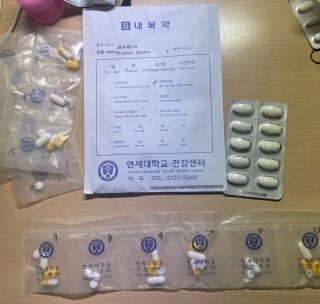
Currently, I am on the 2nd day of pills, soon to take packet 5. The pharmacist had numbered them to help me keep count and stay on track. I have felt better since I've been on these meds but I will know if I recover fully by the end of the 7th day. There are many resources concerning medical care in South Korea and while I was worried that the current doctor protest would affect my care, it did not. Hopefully, this gives you an idea of what you can do in Korea if you become sick and need the proper care.
Related Posts
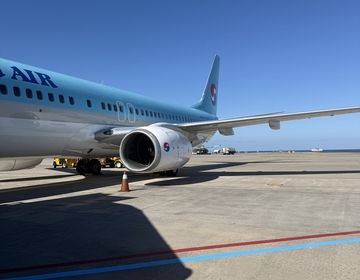
Soul Searching in Seoul: Everything I Learned and What I Wish I Knew
Before I start crafting my “study abroad changed me” answers for friends and family, here are the practical things I wish I’d known. The things that would’ve saved me time... keep reading
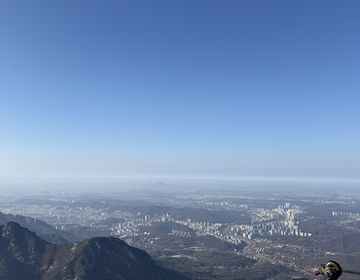
A Seoul Escape to Bukhansan
Get out of the hustle and bustle of Seoul and head to the peak of Bukhansan!
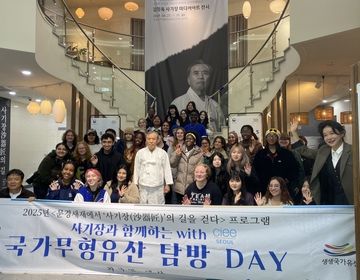
My Time in South Korea Attending Yonsei University: A Life-Changing Chapter
By: Zahrraa Al-Salman Studying abroad had always been a dream of mine—an opportunity to step outside of my comfort zone, immerse myself in a new culture, and deepen my understanding... keep reading
